Seasonal and locally sourced ingredients have become a sign of culinary cool in restaurants across the globe, but looking beyond places like New York or London, where the foraging and wild food scene is an established niche, we wondered: What does Bangkok have to offer those embracing a “locavore” diet?
To find out, we joined Bangkok-based permaculturalist and forager Goustan Bodin in a search of what’s edible on Bang Kachao. This less-developed rural idyll lies across the Chao Phraya River from Bangkok’s CBD. Providing a welcome break from the smog-filled city not far away, Bang Kachao is nick-named the “Green Lung.” And so we set off on bicycles, hoping to gather a range of edible plants from roadside hedgerows.
Long-term French expat Bodin — known locally as “P’Dan” — moved to the Green Lung for a more tranquil way of life. But shortly after, he found himself waiting for a pay check with hardly a baht to his name.
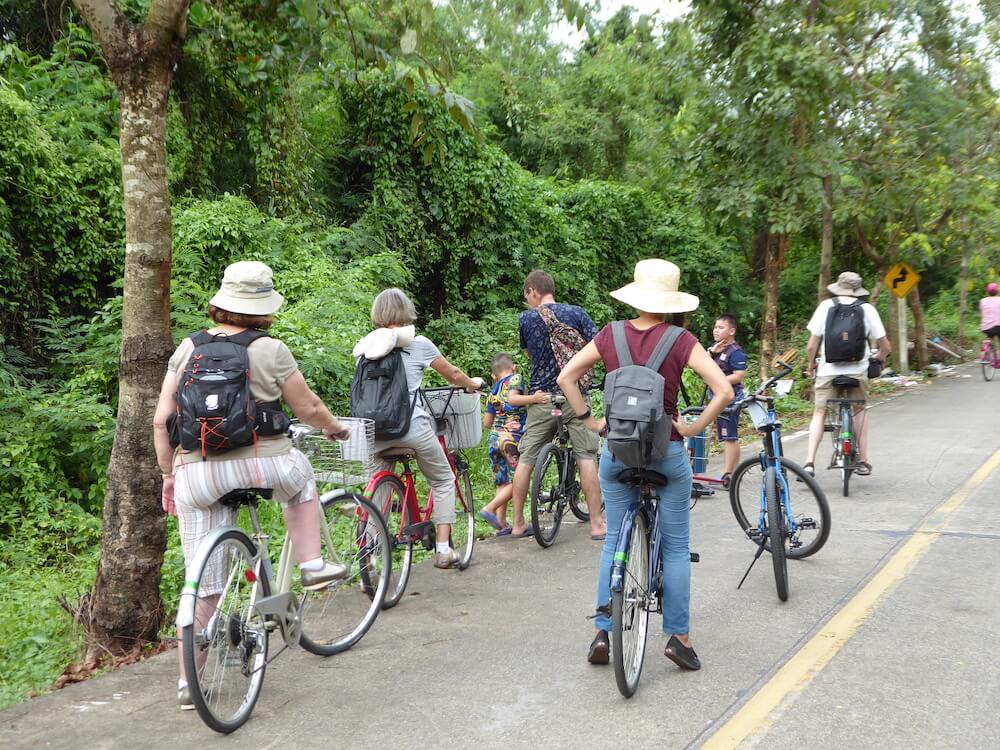
“I noticed local people gathering plants and began asking what they were collecting and how they used them. People were open, friendly and right away we had a connection,” said Bodin, who is also a fluent Thai speaker. Shortly after that, Bodin began collecting plants alongside the locals and was amazed by what could be found.
Bodin explained how gathering food feels: “When you forage for survival, you walk the world hungry. And when you are hungry, you keep looking. You’re on the edge — in a totally different state of mind.”
“Some rural people are still doing this. Although, you need a lot of knowledge: knowing what to gather, recognizing if it’s ripe and remembering where to return to if it isn’t. Walking in the forests, fishing, setting traps takes time too,” he continued, admitting living this way full-time would be tough.
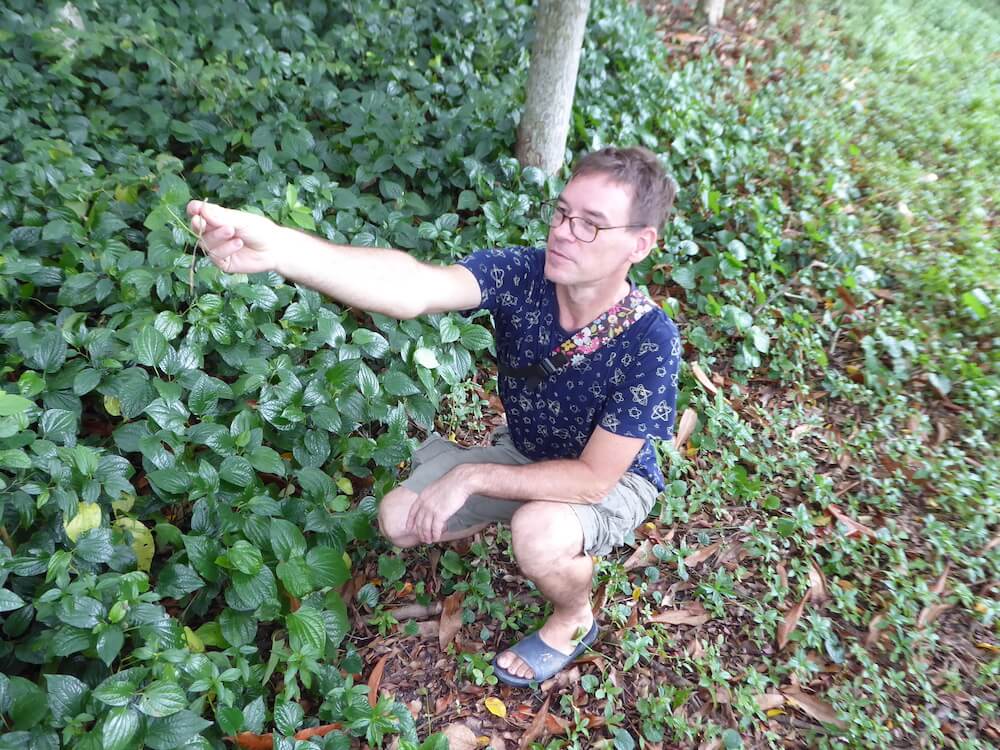
However, Bodin’s foraging provided a vegetarian meal, which when supplemented with rice, was near enough daily sustenance to keep him going until the check came through. He found amaranth and Thai morning glory in abundance, and the experience led him to set up business running foraging tours for tourists.
During our time with Bodin, the first thing we found was a huge patch of chaphlu leaves, sometimes known as wild betel in English. They are used to make miang kham, a traditional wrap filled with roasted coconut, chili, shallots, ginger, lime, peanuts and dried shrimp — all eaten in one bite. Next, we came across the Thai morning glory which kept Bodin going during his cashflow problems.
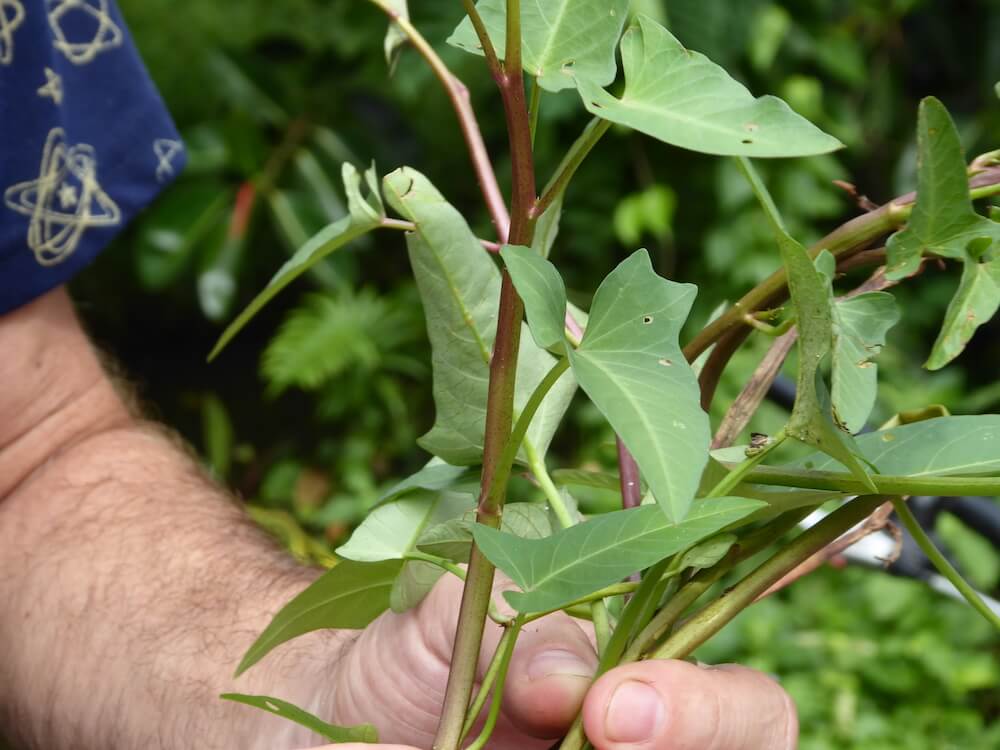
“This is not the Chinese morning glory used in the famous Thai dish Pak Boong Fai Deang, made with fiery red chilis, garlic and soybean paste. It’s a different plant and grows all over Thailand but is less commonly used. These days few people are able to recognize edible plants growing wild,” Bodin said.
Foraging reconnects us with the natural world. “We understand our complex, urban cityscapes — interpreting advertising billboards, reading road signs and navigating shopping malls, but we don’t understand our natural environment. We see animals and barely know their names. This is even more true of plants,” mused Bodin.
“Our world is changing, and nature is being destroyed. We are reaching the point where Mother Nature can no longer provide her food services anymore. We need to live harmoniously again and to do this, we need knowledge of what’s around us. Thailand still has this knowledge, but it is disappearing fast,” explained Bodin.
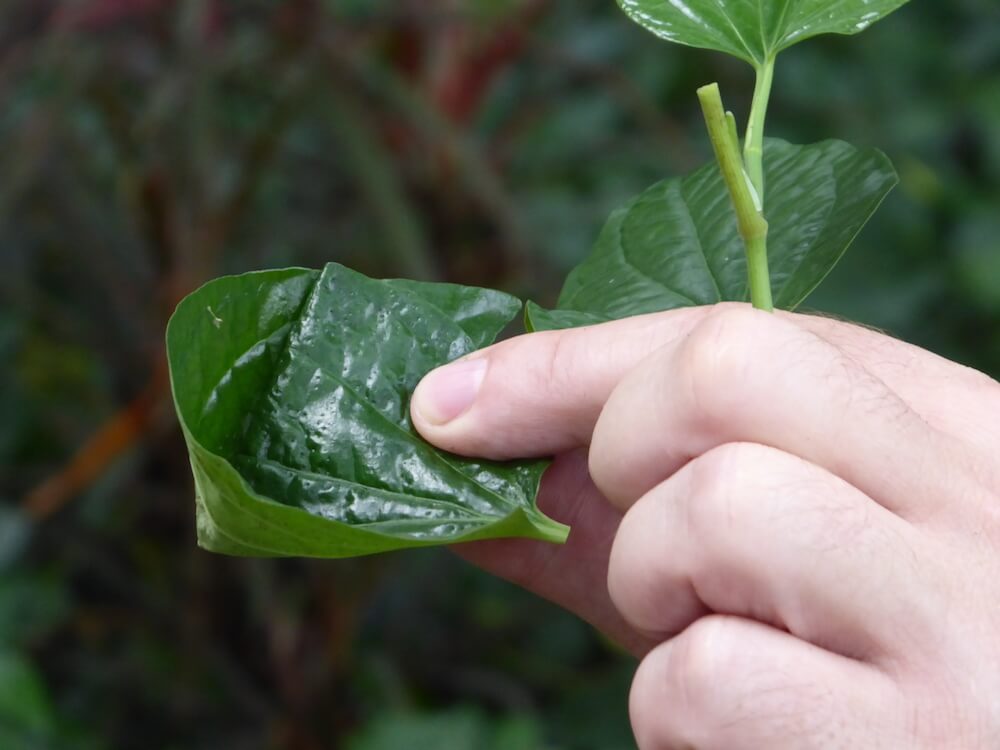
As our adventure ended, Bodin also relayed how he has not always been successful — once, after eating a cucumber-like fruit that he plucked from a hanging plant, he suffered 48 hours of diarrhea, accompanied by an intense nausea. Uncomfortable but unable to vomit, he lost 3 kilograms from the experience, and uses this example to warn would-be foragers to only eat what they are sure is edible.
But those wishing to sample Thailand’s forgotten food do not need to take such risks. Across the river, in Bangkok’s luxurious mall Gaysorn Village, Chef Bongkoch “Bee” Santongun runs the restaurant Paste Bangkok, which serves up her unique interpretations of classic Thai cuisine, featuring rare, foraged and wild ingredients. She has been awarded a Michelin star — two years running — for her efforts.
“Thailand has literally thousands of useful and edible plants traditionally collected by rural people for their meals or to sell at markets,” explained Santongun.
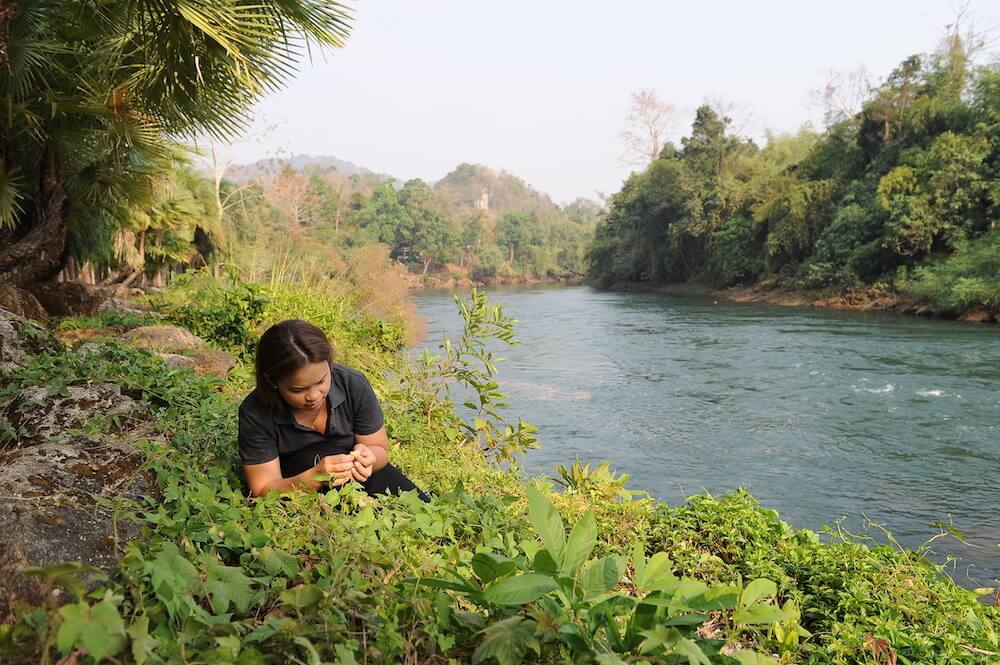
She added that due to environmental changes, like mass deforestation, these plants are becoming harder to find. They are not showing up at markets because they don’t sell well as people no longer know how to cook with them.
“My mission is to bring these plants and the recipes that include them back — so diners can see and appreciate them afresh,” the chef said.
Asked whether this approach played a role in her award of a Michelin star, Santongun replied: “Certainly, the judges look for the personality of the chef within the dishes. By including rare and wild ingredients, I can reinterpret popular recipes like pomelo salad. I aim to keep the overall taste the same, but add a layer of complexity.”
At her restaurant, Santongun presented me with a basket laden with non-commercial herbs, flowers, leaves and fruits — all entirely edible, and all used on her menu. She pulled out a small, extremely bitter tasting green leaf.
“It’s called sadao in Thai — it’s found everywhere and picked wild. I boil it twice to reduce the bitterness and add tamarind and palm sugar to tone it down further. Foreigners find it too bitter, but Thai people are more accustomed to the taste. There’s a belief that bitter flavored foods have medicinal properties,” said the chef, whose studies have revealed that many of the plants have traditional uses as medicines.
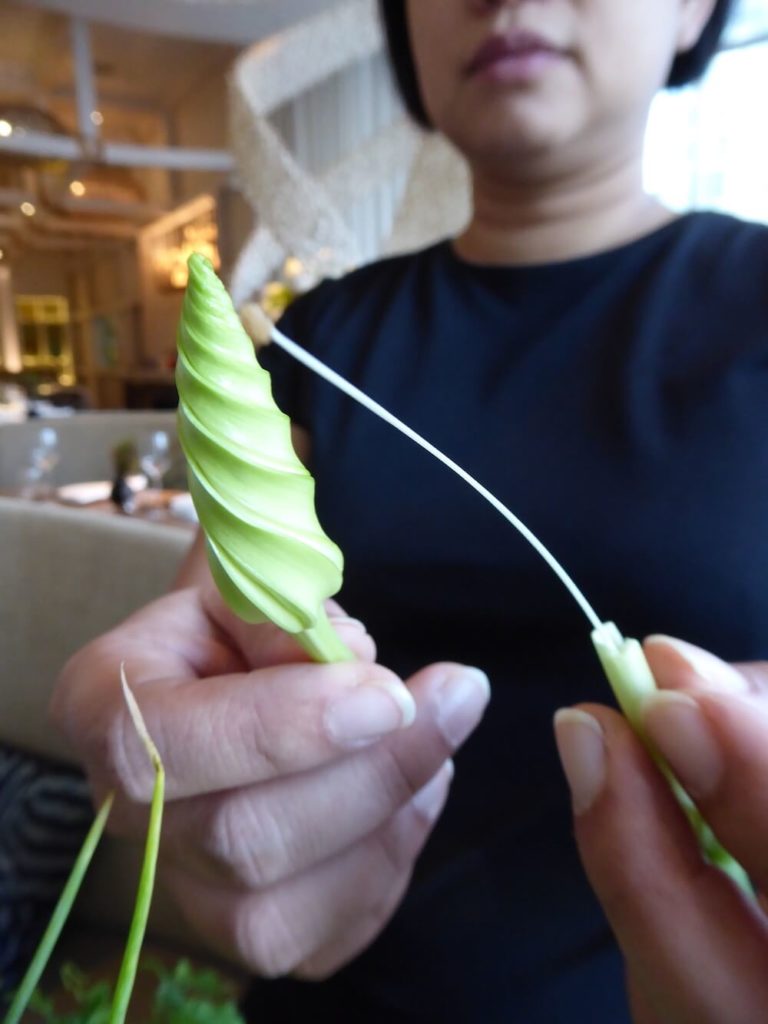
Santongun’s knowledge of rare flora is extensive. She held up a strange, pale green, spiral shaped specimen, named Moon Flower. “It’s a night-blooming flower that we call chom chan. It is tasty stir-fried with oyster sauce, but you must remove the flower’s stigma as eating this part upsets your stomach,” she explained.
Some of her unfamiliar ingredients are cultivated in a few remaining farms. Santongun told us about a variety of rose apple called chompu-nam-dok-mai: “This only grows around Amphawa floating market in Samut Songkhram and is seasonal, making it hard to get. There’s also a huge orange (som gao), which only a couple of farms still grow.”
What are the challenges of this approach for restaurateurs? “Mainly the seasonality of the ingredients. If a key recipe component is unavailable, the dish is off the menu. We have to remain flexible. For example, we use different edible flowers at different times of year,” answered the chef.
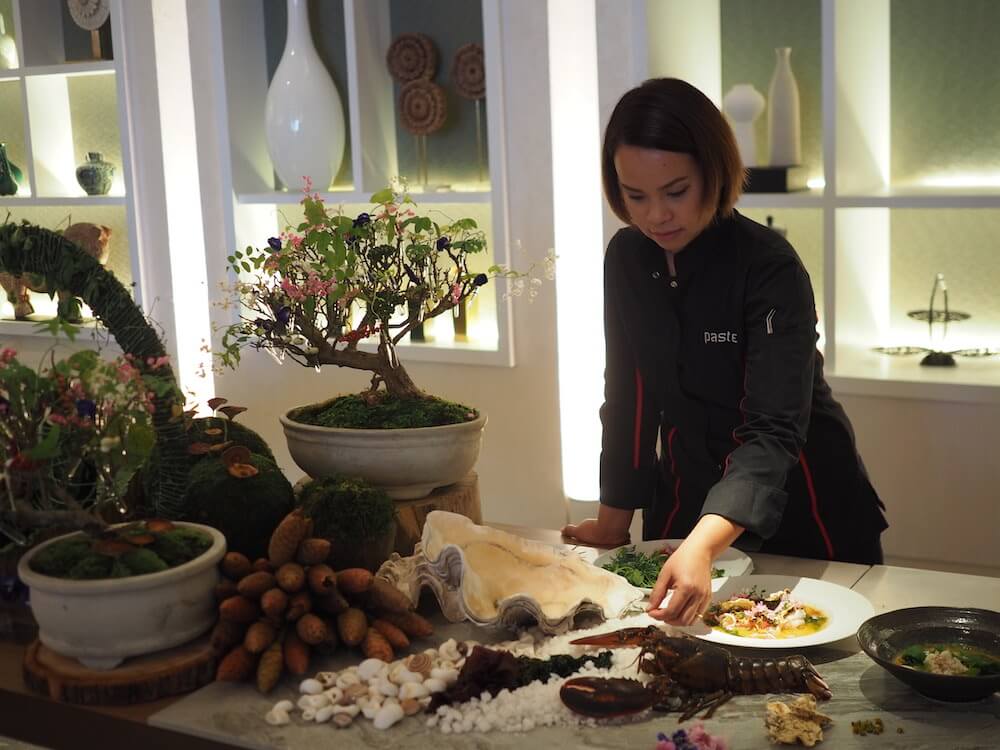
Our takeaway? Whether it’s learning how to gather wild plants in the great outdoors or indulging in refined and original versions of classic Thai dishes — or hey, maybe even both — local foodies certainly can experience the wilderness-to-table movement here in Bangkok.
And while doing so, food-lovers will also discover Thailand’s great natural diversity.
Goustan Bodin can be contacted through his Facebook page.
Paste Bangkok is at Gaysorn Village, 3rd floor 999 Phloen Chit Rd.
Open daily, 12-2pm and 6:30-11pm
![Image composite: (Left) Chef Bee shows us a basket of edible plants at Paste Bangkok [Photo: Ewen Mcleish] and (Right) Chef Bee picking edible plants [Photo: Paste Bangkok]](https://cdn.coconuts.co/coconuts/wp-content/uploads/2019/04/ChefBeeforageBKK-960x540.png)



